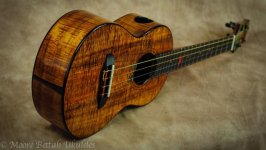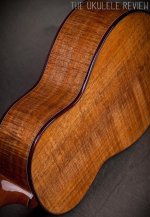wayfarer75
Well-known member
By-the-by ... these mentions of "tortoise" bindings ... is this real tortoise/turtle shell or some kind of fancy wood or other material?
Genuinely interested
Not on any modern ukes--strictly plastic type stuff. Vintage ukes, they may have real tortoise shell, or it may be celluloid (my guess is that most vintage ukes don't have the real thing).
Last edited:


